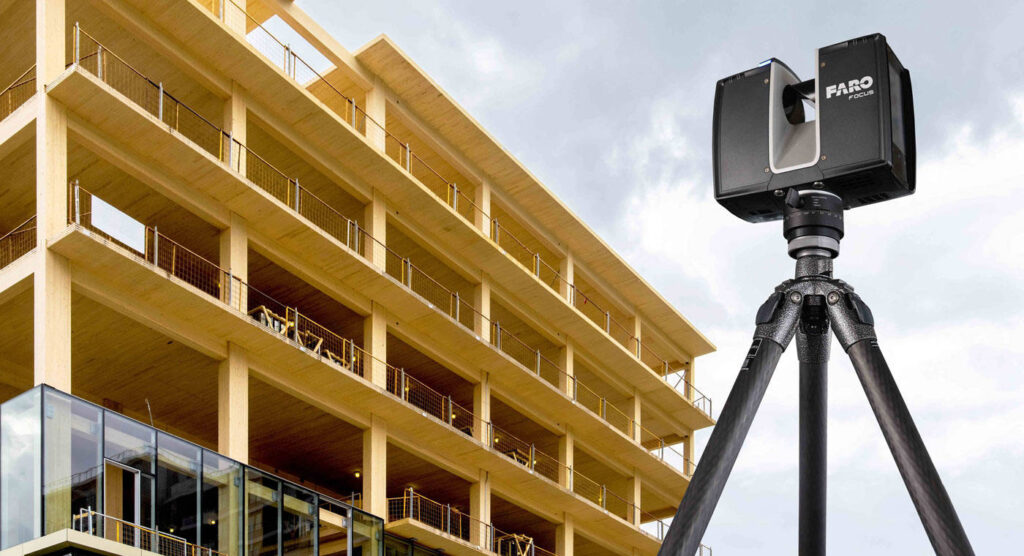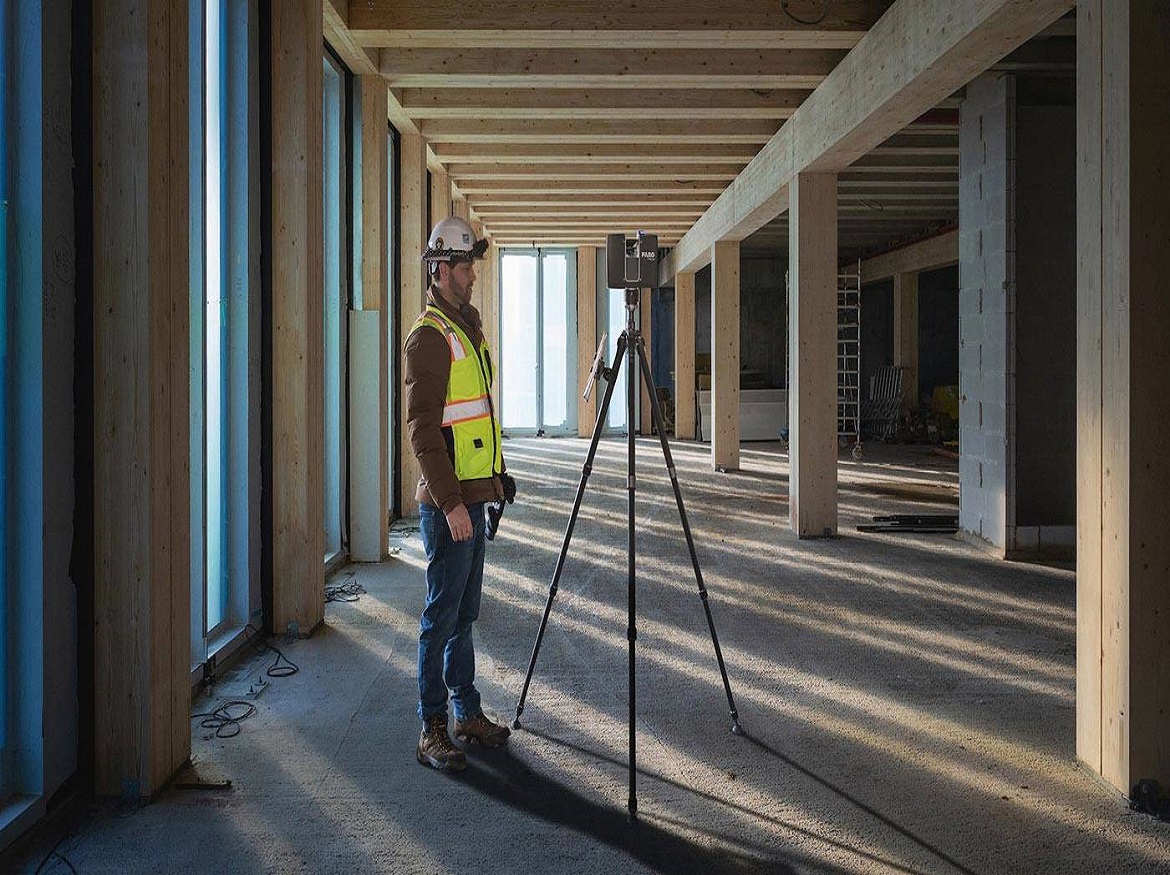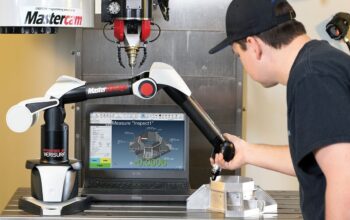Even though it was January according to the calendar, the high “winter” temperatures made it feel more like May or even June to millions of Europeans. When heat waves occur, it’s only natural for people to think about how human activity has hastened climate change and the steps that must be taken to minimize the emission of gases that warm the earth.
It is critical that the building industry in the UK and around the world work to address the issue given that the built environment is responsible for up to 40% of global CO2 emissions (14.6 gigatons), increasing the likelihood of future out-of-season heat waves.
Mass timber construction for the actual build and 3D laser scanning, which enables accurate and reliable as-built data capture and documentation: crucial for progress monitoring, efficiency gains, faster project completion, and construction verification, are fortunately two solutions that contractors, structural engineers, and architects would be wise to adopt.
Mass timber construction for the actual build and 3D laser scanning, which enables accurate and reliable as-built data capture and documentation: crucial for progress monitoring, efficiency gains, faster project completion, and construction verification, are fortunately two solutions that contractors, structural engineers, and architects would be wise to adopt.
Mass Timber for the Masses
Mass timber, as opposed to conventional log buildings or even dwellings made of wood, is a composite material. Typically constructed of pine, spruce, or fir, it can rival steel in terms of strength and longevity when placed together with adhesives to make panels and beams.
The Council on Tall Buildings and Urban Habitat (TCBU) reported that there were 139 mass timber structures eight floors or taller in existence worldwide as of 2022, with 71% of them located in Europe and more on the way.
Oakwood Tower, which is slated to be built in the center of London’s Barbican Estate, a Grade II listed concrete residential complex, is one of the tallest wood structures that the City of London is considering allowing in the future. Wooden skyscrapers in the UK have recently received a lot of media attention.
For the most part, mass timber structures are light in comparison to their load-bearing capacity, made from a sustainable source (wood harvested from managed forests to ensure a balanced cycle of cutting and replacing), have excellent thermal properties (reducing a building’s HVAC costs and energy usage), and have a reduced carbon footprint because the chemical element is already sequestered in the wood itself. Not to mention the reduced equipment/staff required on construction sites.

3D Point Cloud Power
As stated in the headline of this paper, the main benefits of integrating 3D laser scanning into mass timber buildings are speed and precision.
This is true for any building material that was used as-built, such as steel or reinforced concrete, but it is especially true when working with wood. For instance, structural lumber introduces temperature stability concerns, affecting elongation or shortening and member connection precision for fit-up and detailing, despite the fact that wood has long been admired for its beauty and regarded as a finishing material.
In addition to the needs particular to wood, new construction projects involve a variety of stakeholders that rely on project information provided through drawings, submittals, images, models, etc.
Subcontractors are also essential to the construction process because they each concentrate on a different but related duty. Progress on these intricate projects hinges on each subtask and each subsystem (MEP, for example) operating without a hitch. A complete and precise record of a build’s as-built condition is guaranteed through 3D laser scanning. Additionally, it enables a variety of subcontractors and stakeholders to monitor how a whole project is coming together. There is even more focus on installation verification before moving on to the next stage when a design makes use of prefabricated materials and components, such as mass lumber.
Engineers must be aware of when a building design deviates from architectural representations and where on-site/in-field improvisation may be necessary. This is in addition to the need that subcontractors to have complete project line-of-sight. Without that line of sight, other trades may have unfavorable side effects that cause lost time, money, and project delays.
Last but not least, the as-built documentation produced by 3D laser scanning aids in the fulfillment of contractual responsibilities between contractors and other project partners. Stakeholders may be certain that work was completed accurately, on schedule, and within budget by utilizing the capacity of accurate and trustworthy 3D data.
Project stakeholders can feel confident that their mass timber project is on track to succeed when combined with sophisticated software that enables users to create detailed 3D visualizations of real-world objects and environments, like stairs, roofs, walls, and flooring, and export that data in various formats.
Going Against the Grain?
While it is still true that mass timber construction faces some difficulties, such as a lack of knowledge about the building material, doubts about its industrial scalability, regulatory obstacles, high insurance costs, and unpredictability regarding flammability, its advantages far outweigh its alleged disadvantages.
Adding the most exact and precise data-generating technology the 3D measurement sector has to offer to the well-known bio-mass composite is one of the greatest methods to ensure that mass timber’s instant becomes a movement.
That answer is 3D laser scanning. The percentage of CO2 emissions produced by the construction sector will eventually decline as mass timber use increases.
Near-term prevention of future winter heat waves is unlikely with such efforts. However, thanks to several industry-wide sustainability initiatives, our “totally insane” environment will start to stabilize, safeguarding the very forests on which the future expansion of mass timber depends.
Credits: FARO
Click on the following link Metrologically Speaking to read more such blogs about the Metrology Industry.









